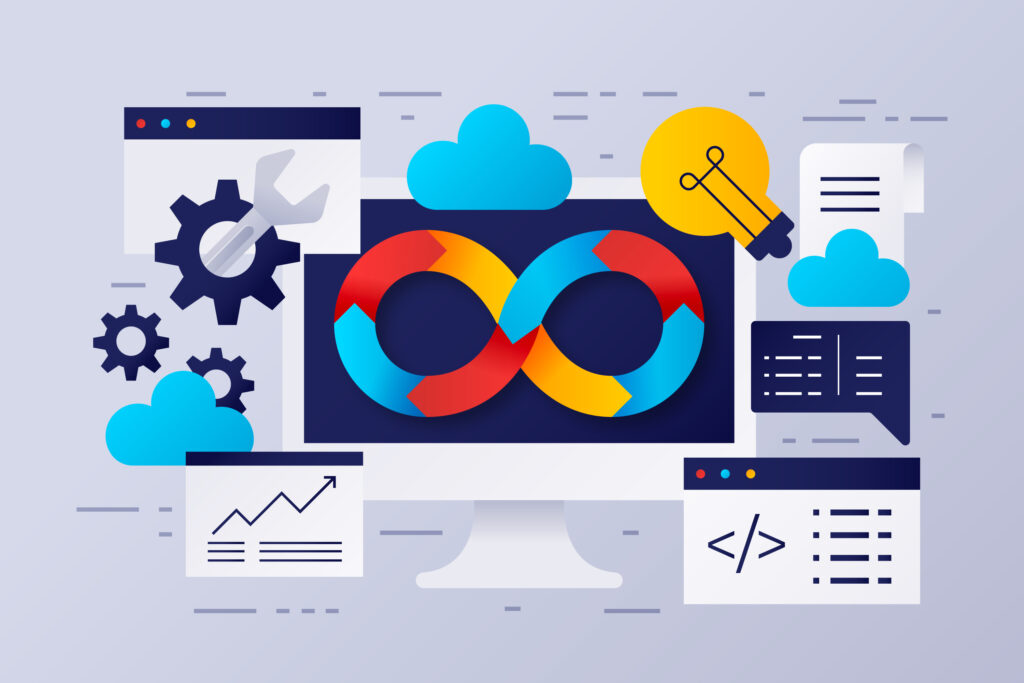Azure DevOps Service Connection serves as a vital link between Azure Pipelines and external services, streamlining task execution and enhancing security. This guide explores its functionalities, setup, and best practices for optimizing DevOps workflows.
Azure DevOps Service Connection
![]()
You can establish a link from Azure Pipelines to external and distant services to run tasks within a job. After setting up this link, you can manage, modify, and enhance the security of the service connection.
For instance, you may wish to link to various categories and their associated services:
- Your Microsoft Azure subscription: Set up a service connection using your Microsoft Azure subscription, then utilize the connection’s name in an Azure Web Site Deployment task within a release pipeline.
- Another build server or file server: Establish a GitHub Enterprise Server service connection for a GitHub repository.
- An online continuous integration platform: Formulate a Jenkins service connection to facilitate continuous integration of Git repositories.
- Services on remote machines: Generate an Azure Resource Manager service connection for a VM equipped with a managed service identity.
Azure Pipelines can automate the building and testing of code projects, ensuring they are accessible to others. It is compatible with nearly all programming languages and project categories. Azure Pipelines integrates both continuous integration (CI) and continuous delivery (CD) processes to examine and construct your code, then deliver it to any designated location.
As a segment of the continuous delivery (CD) procedure, it is crucial to deploy resources to one or multiple environments. To bridge Azure Pipelines with Azure cloud, it is essential to establish a service connection, specifically known as the Azure Resource Manager (ARM) Service Connection.
When initiating the creation of a service connection via the Azure DevOps portal, you will encounter various authentication methods. We will delve into and elucidate the distinctions, advantages, and disadvantages of each method.
Service Connection via Service Principal Secret
A service principal acts as an identity within Entra ID, specifically for applications, services, and automated tasks, essentially serving as a user account for non-human entities. For authentication, service principals can utilize a secret, which is employed in this tutorial.
When establishing a service connection via a service principal, you have two methods:
1. Automated Service Principal
While convenient, this method isn’t ideal due to potential security concerns. It automatically selects a subscription from all available to the logged-in user, often a personal account with excessive permissions. Despite its simplicity, creating service connections this way might breach the least-privilege security principle.
This method lets Azure Pipelines fetch all accessible subscriptions and instances, automatically deploying service principals in Azure AD with secret configurations. It offers several advantages, such as automated secret management and contributor role assignment. However, it may set service principal names and secret validities against best practices.
2. Manual Service Principal
This approach demands pre-creation and specification of the desired service principal for Azure connection. Though more secure, as secrets remain encrypted and invisible in both Azure DevOps and Azure AD, it requires additional administrative effort for secret management.
Users can access and interact with secrets, potentially posing security risks. The administrator gains more control but must handle authentication credentials manually.
3. Managed Identity
This method allows an existing service principal within the Entra ID tenant. It aligns with naming standards, allows authentication method management, and provides permission assignment flexibility.
Using Azure Managed Service Identity in Azure AD with VM-based agents eliminates the need for secrets, bolstering security. However, it mandates self-hosted agents for Azure Pipelines and intricate configurations.
Azure DevOps service connection using workload identity federation
A service connection in Azure DevOps, leveraging a service principal, requires either a secret or a certificate for its authentication. These authentication credentials, whether secrets or certificates, come with expiration dates. When configured manually, the responsibility falls on you to keep these credentials up-to-date.
Alternatively, workload identity federation offers a different authentication approach. It employs OpenID Connect to authenticate with Azure resources without necessitating secrets. This is achieved by configuring Entra ID to trust tokens from an external identity provider, such as Azure DevOps or GitHub.
In this process, the external service trades trusted tokens for access tokens obtained from Entra ID. These access tokens, which are short-lived, grant access to the specific Azure resources approved for the external workload.
Workload identity federation establishes this trusted association using either service principals or managed identities. You also have the flexibility to utilize a previously established service principal from this guide.
While the new service connection wizard offers automated creation features, the subsequent parts of this guide emphasize the utilization of an existing service principal or the establishment of a managed identity.
Convert to workload identity federation
You have the option to transform current ARM service connections to utilize workload identity federation in place of a service principal. However, this conversion is applicable only to service connections initially established by Azure DevOps. If you manually set up the service account, it cannot be converted because Azure DevOps lacks the authorization to alter its credentials.
Why is an Azure DevOps Service connection Essential?

When orchestrating deployments both from Azure DevOps and other CI/CD platforms, establishing a connection to your Azure tenant becomes imperative. Given that machines execute these deployments, relying on personal credentials is not a good option.
Instead, machine credentials should be employed to establish this connection. In Azure DevOps, this mechanism is referred to as a service connection. It’s worth noting that the Azure Classic option exists primarily for legacy support, while Azure Resource Manager is typically employed for contemporary Azure deployments.
Service Connections serve as pivotal tools for orchestrating authentication, authorization, and access to external assets without directly exposing sensitive details like credentials or tokens within your pipeline scripts. Instead, Azure DevOps allows you to configure a Service Connection, which securely retains the requisite credentials or tokens.
Understanding Service Connections:
Varieties of Service Connections:
Azure DevOps offers diverse service connection types, encompassing Azure, GitHub, Jenkins, Docker, Kubernetes, and more. Each variant is tailored to streamline integration with specific services or resources.
Initiating a Service Connection:
When setting up a Service Connection, you usually furnish the essential authentication particulars pertinent to the target service. For an Azure Service Connection, this might entail a subscription ID, tenant ID, client ID, and client secret.
Secured Repository:

Post-creation, the Service Connection preserves the provided credentials or tokens within Azure DevOps in a secure manner. This negates the necessity of embedding sensitive data within your pipeline scripts.
Integration with Pipelines:
Subsequently, you can incorporate the Service Connection into your pipeline tasks and operations. For example, when deploying an application to Azure, we can configure the task to use the Azure Service Connection you set up. This ensures the pipeline leverages the stored credentials for authenticating and engaging with Azure assets.
Access Limitation:
Service Connections can be tailored to specific projects or pipelines, guaranteeing that only sanctioned pipelines gain access to the correlated resources.
Simplified Maintenance:
By encapsulating the intricacies of authentication and authorization, Service Connections streamline the process of managing and refreshing connections when updating credentials. A single modification in the connection details suffices, and all pipelines matches with that connection will seamlessly adopt the new data.
Enhanced Security and Oversight:
As sensitive data resides securely within the Service Connection, it fortifies the overall security posture and compliance adherence. Additionally, access to Service Connections can modulate don’t he basis of roles and permissions, enhancing auditability and control.
[Want to learn more about Azure DevOps service connection? Click here to reach us.]
Conclusion
Azure DevOps Service Connections serve as the linchpin of contemporary software deployment methodologies, facilitating the seamless integration of disparate tools with the Azure platform. These connections are indispensable, ensuring the confidentiality of our authentication credentials while orchestrating the efficient execution of deployment workflows. Their inherent adaptability enables them to effortlessly interface with a diverse array of services, thereby accommodating the multifaceted requirements of modern projects.
Moreover, Service Connections play a pivotal role in upholding the integrity and organization of our projects. By enforcing stringent access control mechanisms and adhering to established governance frameworks, they mitigate potential security risks and maintain project stability. This ensures that only authorized personnel have access to critical resources, safeguarding against unauthorized access and potential breaches.
For professionals immersed in DevOps practices, a comprehensive understanding and proficient utilization of Service Connections are paramount for steering secure and streamlined cloud-based projects towards success. Furthermore, leveraging the expertise and support provided by dedicated teams like Bobcares empowers organizations to navigate the complexities of Azure DevOps management with confidence and efficiency, freeing up valuable time and resources for innovation and value delivery.
PREVENT YOUR SERVER FROM CRASHING!
Never again lose customers to poor server speed! Let us help you.
Our server experts will monitor & maintain your server 24/7 so that it remains lightning fast and secure.







0 Comments